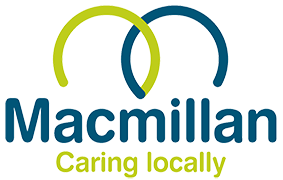Why Charity Reserves Matter
In a world of rising uncertainty—from economic instability to unexpected operational challenges—charities are under increasing pressure to ensure their sustainability. One of the most overlooked but vital strategies for doing this is strategic cash reserve management. At The Charity Champion, we believe that empowering charities means not just highlighting their causes, but also helping them build strong foundations.
Why Cash Reserves Are a Lifeline
An article recently published in Charity Today asked a critical question: “Is your charity maximising its cash reserves?” It’s a timely reminder that reserves are more than just idle cash—they are your organisation’s safety net. Without them, even the most impactful charities can falter when faced with unexpected costs or drops in funding.
What Makes an Effective Reserve Policy?
According to the Charity Commission, every charity should have a clear reserves policy that:
- Explains why reserves are held.
- Identifies the level needed to protect beneficiaries and operations.
- Justifies the current level of reserves.
- Plans for their use during times of crisis or opportunity.
Yet many charities either tie up funds unnecessarily or fail to prepare for emergencies—both risky paths that can undermine the very mission they exist to serve.
The Risks of Neglecting Reserve Policies
The absence of a coherent reserves policy can have serious consequences. A well-known and tragic example is the collapse of Kids Company. Despite repeated warnings about their financial vulnerabilities and inadequate reserves, the charity continued operating without addressing these risks. Eventually, this lack of financial foresight led to its downfall—affecting not just the organisation, but the vulnerable children and young people it served.
This isn’t an isolated case. According to the Charity Commission, nearly 70% of charities with an income over £10,000 have no documented reserves policy—despite often holding back substantial funds from expenditure. This kind of oversight:
- Jeopardises a charity’s ability to weather funding disruptions,
- Weakens strategic planning, and
- Undermines donor and stakeholder confidence.
A Practical Framework: The Larder, Fridge, Freezer Model
To make reserve planning accessible, some sector leaders recommend the “Larder, Fridge, Freezer” model:
- Larder: Quick-access funds for day-to-day needs or emergencies.
- Fridge: Medium-term reserves for planned initiatives.
- Freezer: Long-term strategic reserves—less liquid, potentially invested.
This approach helps boards and finance teams visualise how to allocate resources in a way that balances flexibility with sustainability.
How The Charity Champion Helps
At The Charity Champion, we spotlight charities doing exceptional work—and offer tools to help them thrive behind the scenes too. That includes promoting smarter financial practices, stronger governance, and more transparent communication.
We also:
- Help donors discover values-aligned charities through our Charity Finder.
- Showcase remarkable organisations, like Rays of Sunshine, through our Charity of the Month feature.
- Share sector insights and updates to keep the community informed and inspired.
Take Action Today
Charities: Review your reserves policy now. Does it reflect your current risks, obligations, and growth goals?
Donors & Supporters: Ask the charities you support how they’re planning for the future. A charity that protects its mission financially is a charity built to last.
Everyone: Encourage transparency. A well-managed reserve policy is a mark of professionalism, not hesitation.
Final Thought
Strong charities don’t just do good—they do it sustainably. Financial resilience is just as important as passion. As we champion your causes, we also champion the tools and knowledge that help you endure.
🔗 Discover more resources, inspiring causes, and your place in the giving ecosystem at thecharitychampion.com
Published: 4 June 2025
Updated: 17 June 2025







